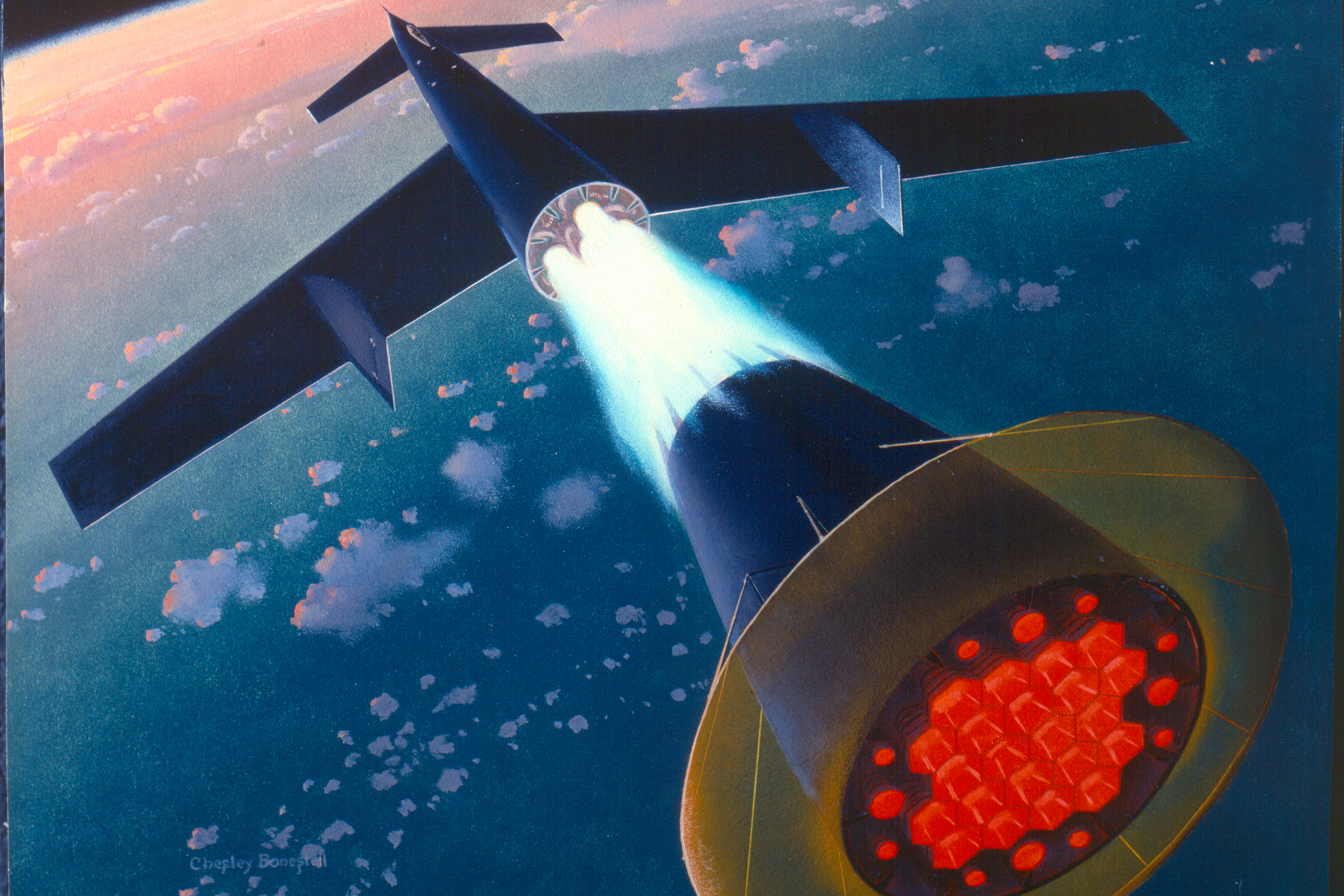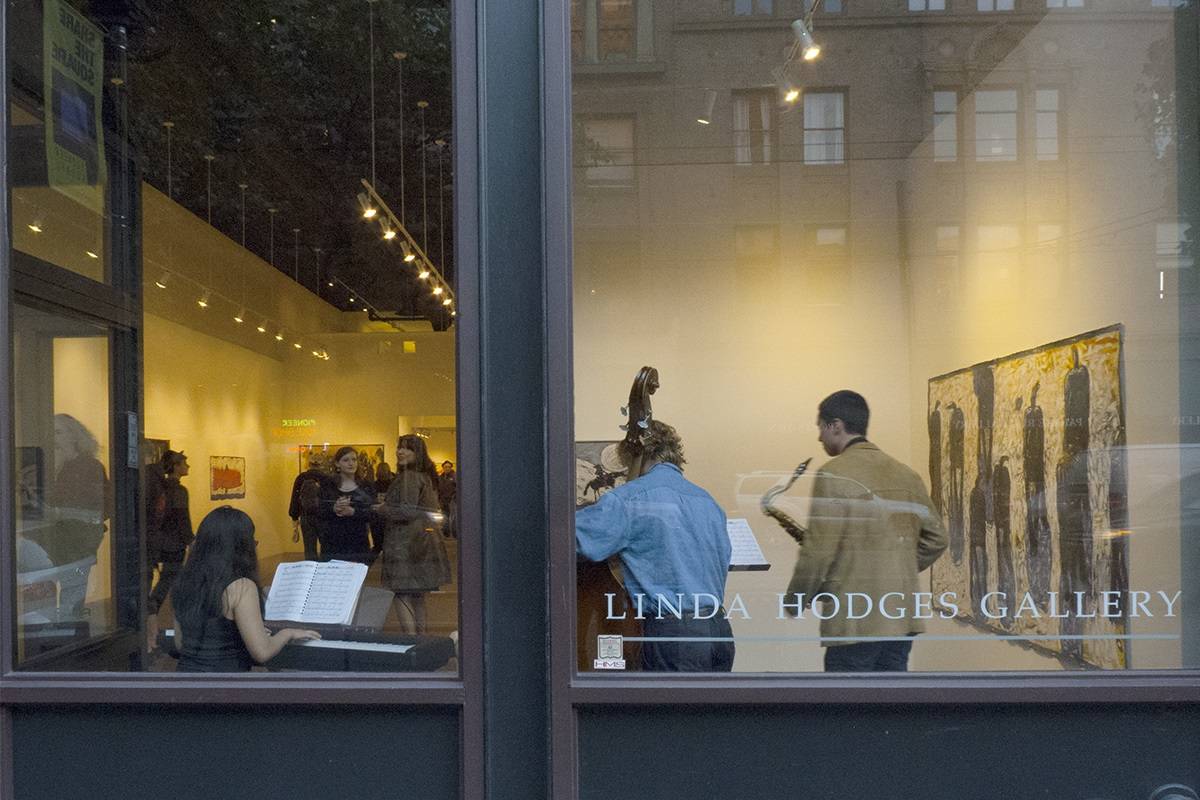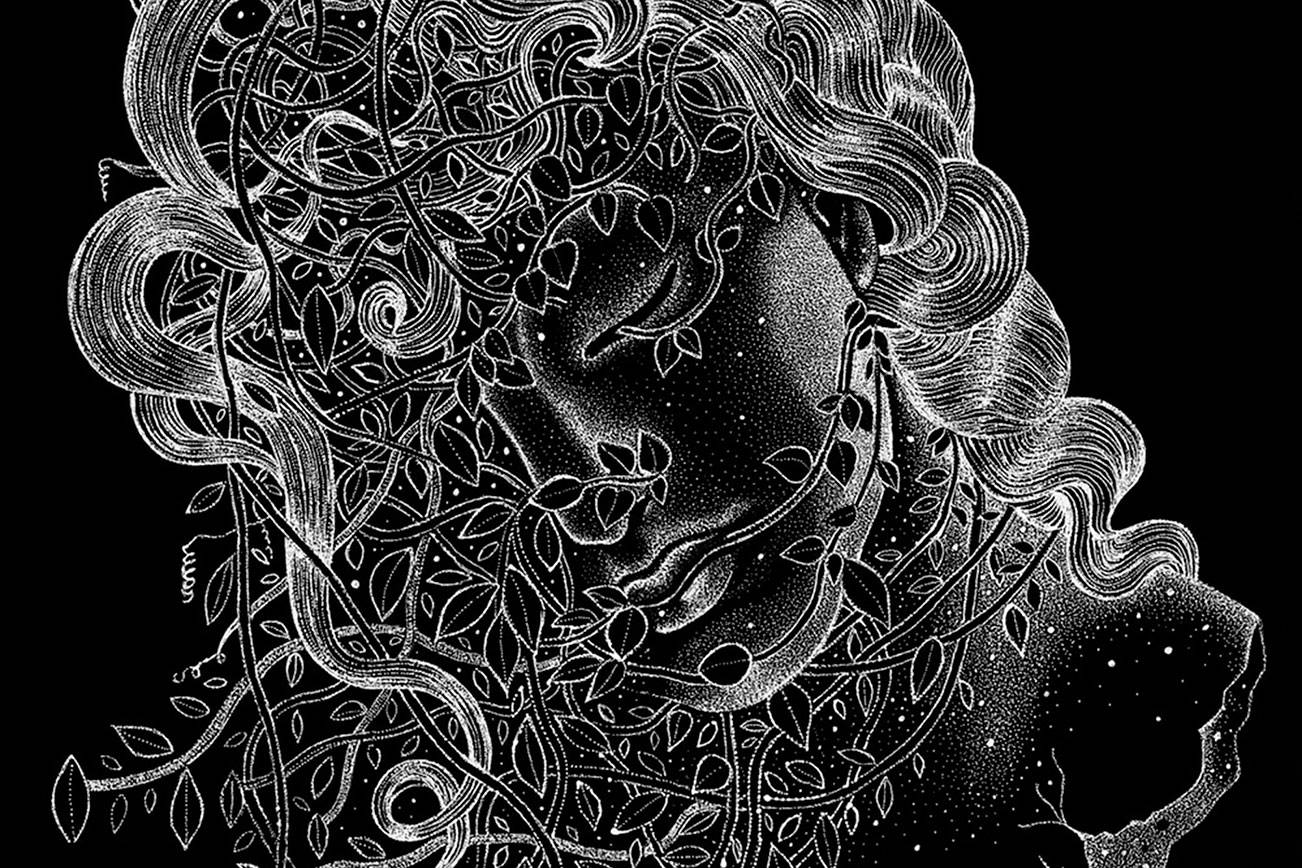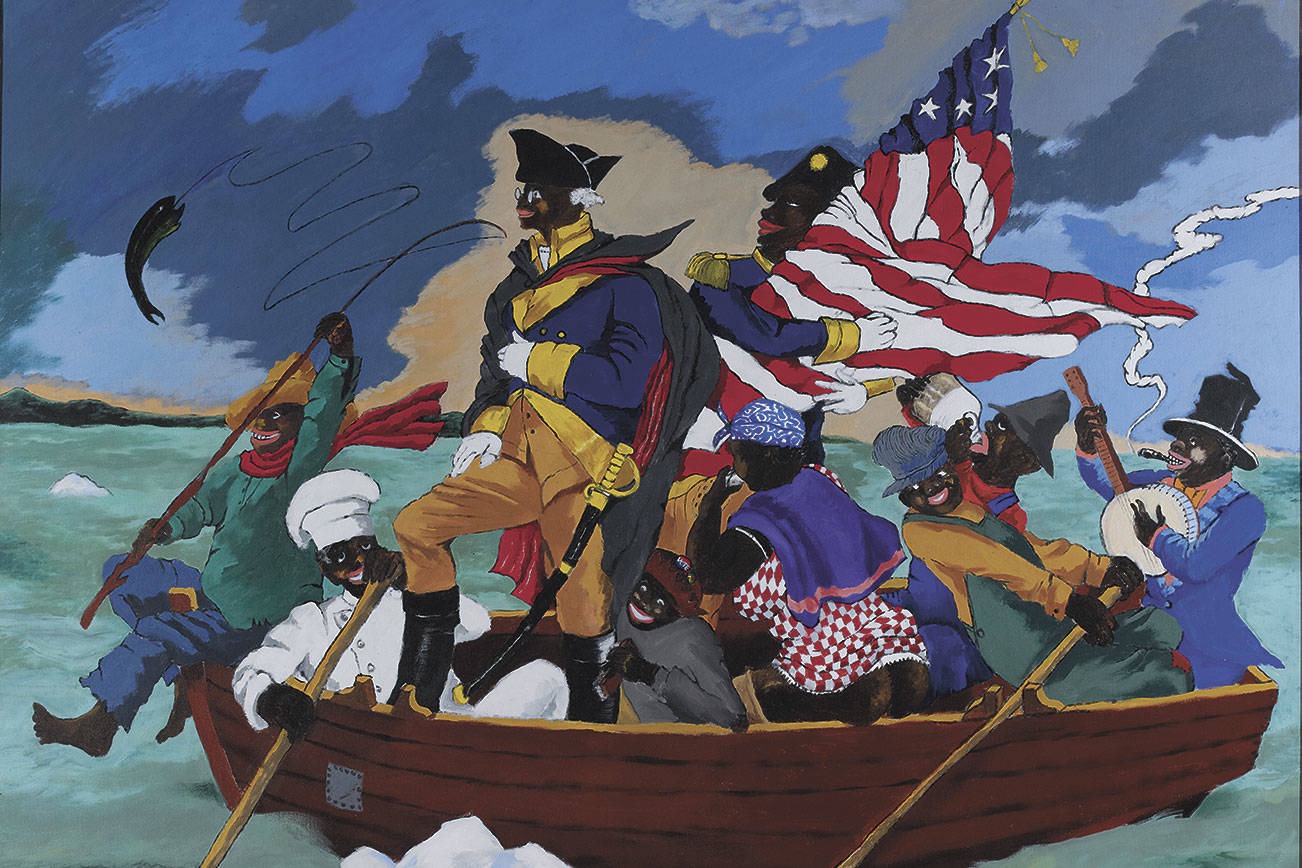Pivot Art + Culture’s new exhibition, Imagined Futures, is drawn from Paul Allen’s collection of outer-space paraphernalia and art. I expected it to be quirky and nostalgic, and it is. I didn’t expect it to be wryly funny, but it is.
It was also unexpectedly personal. As an Air Force brat, some of my earliest memories are of bases, rooms full of plane models, wall-to-wall propaganda and nationalistic art—a jumble of aspiration, pride, and machinery. In the Pivot exhibition space, the walls are gallery white instead of wood panel, but it feels much the same.
Entering it sent me back three decades, to a part of my childhood long unexamined. As a child I wanted to be an astronaut, but it has been years since I considered what that means. It was, to my pious yet inquisitive mind, a means of seeing God’s creation more fully, being literally closer to the heavens and removed from the noise and haste of the sublunary world. (I also wanted to be a monk.) In short, it was a matter of introversion and transcendence.
And yet it was also the exact opposite. Convinced by my millennarian, military upbringing that the U.S.A. was ordained by God to be the light of the world, my more sacred aspirations were charged (or tainted) by the folly of pride, jingoism, hegemony. These contradictions and the foolishness of the future I imagined were not contained to me. Rather, American imperialism to this day remains a product of such thinking.
Thus, Imagined Futures is timely, even if its objects look dated. They are replete with contradictions: the universal vs. the geocentric; the streamlined vs. the snarled; the imagined future that is not prophecy, but a view of the past.
It’s absurd, and that is the source of the humor—not the naiveté of one age, but humanity’s cosmic folly. From our vantage point, one may cast a wry smile at concept art for the 1956 sci-fantasy classic Forbidden Planet, and at glossy saucers and floating cities painted in the ’80s and ’90s. The candy-colored cover art for the book Clouds of Saturn, painted by Don Dixon in 1990, hangs beside a photorealistic Robert Longo charcoal drawing of the planet. Longo captures the ageless perfection of our solar system’s most beautiful planet (sorry, Earth), while Dixon’s vision of cloud cities hovering in transparent domes is merely childish. (I probably would have loved it when I was 5, actually.)
Imaginative speculation, however, is not deserving of ridicule. The real folly is the sense of righteous destiny that turns speculation into a promise of domination. A 1986 depiction of a 21st-century Martian settlement brims with American flags, which made no appearance in earlier works created among a more concerted international effort. This was the Reagan Era, when the Cold War that initiated the space race became the behemoth “Star Wars” program, which dreamed up ever more expensive ways to weaponize the heavens.
This only brought the technology full circle, however. The men who first designed rockets made to carry life off Earth got their start making rockets designed to rain death upon it. In America, the most notable was Wernher von Braun, a former Nazi credited with the development of the V-2 rocket and recruited after WWII by the U.S. government for his expertise via Operation Paperclip. Though his early designs proved unachievable, they became precursors for the successful Apollo launch systems. Imagined Futures includes a 1:48 scale model of his three-stage rocket. It sits across from a 1950 painting by Chesley Bonestell titled Destination Moon. It seems merely an aspirational view of Earth from space, but Bonestell centers his exospheric view on Russia—not so much a celestial vision as a shot across the bow.

Bonestell created some of the era’s most iconic images, including a 1952 concept painting of von Braun’s rocket detaching from its thrusters over earth. This painting was used as the cover image for a series by Collier’s Weekly: “Man Will Conquer Space Soon!” A telling phrase.
Now is a good time to mention that the sole female figure in the exhibition is to the left as one enters, in an absurd 1940 painting by Stevan Dohanos called The Scientists. The woman polishes a distinctly phallic object and leers at the man whose face dominates the frame. He chomps nervously on a pencil. The idea of conquest in Imagined Futures is as confused as it is pervasive, and rightly so. We didn’t conquer space and we never will. The ideals of empire and colonization that have made history on our planet have proven infinitely harder off-planet, and the idea of mass colonization off-world is now, itself, history. Priorities shifted. The Cold War ended. The Challenger exploded. We still spend billions and billions on weaponry, but NASA is underfunded. During Reagan’s “Star Wars” came Lucas’ Star Wars, which showed a shift in taste from harder sci-fi to space operas, wherein the promise of new worlds happened long ago and far, far away. Notably, in a recent film that approximates hard sci-fi, The Martian, the financing of a rescue mission is central to some of the early dialogue. There’s no blustering commander shouting, “Damn the bean-counters! That’s our boy up there!” Instead, you can almost hear the budget committee grinding their teeth off-screen.
Now it’s industrialists, not governments, who are grabbing space-travel headlines; it’s being evaluated as a means of escaping (if not averting) extinction events. Yet it is still linked to dreams of immortality and transcendence, and the frontier remains that unconquerable limit of our experience—our own mind and body. The best sci-fi nods to this persistent human condition, as does Imagined Futures.
Across the room from the jingoistic vision on McCall’s Martian settlement is Thomas Ruff’s towering photo of stars in a black void. It echoes the shape of the monolith in Arthur C. Clarke’s 2001: A Space Odyssey, and curator Benjamin Heywood draws attention to this visual rhyme by placing beside it concept art for Clarke’s books and stills from Kubrick’s film adaptation. Complementary images fill that corner of the exhibition, as Kubrick’s one-point perspective of spaceship interiors echoes Simon Norfolk’s photo of the Large Hadron Collider. On a formal level, the LHC’s symmetrical order is the receding complement to the penetrating shapes of the rockets that dominate the exhibition, and as for its function, it is our best window into the universe’s underpinnings rather than its vastness.
Though Imagined Futures acknowledges the unfulfilled 20th-century dreams of stellar utopias, it successfully refreshes one’s view of how extraordinary the accomplishments of the space race were, things that now almost seem mundane. A show that marries art and science well is uncommon, but one that shows outer space as ripe for artistic response is rarer still. We get only a taste of that, but it is enough. Imagined Futures is odd, but its spirit of inquiry compels one to look inward and outward, to forget weaponized atoms and instead remember the miraculousness of it all, succinctly expressed in the final words of Kubrick’s space odyssey: My God, it’s full of stars. Imagined Futures, Pivot Art + Culture. $5. All ages. ends July 10.








